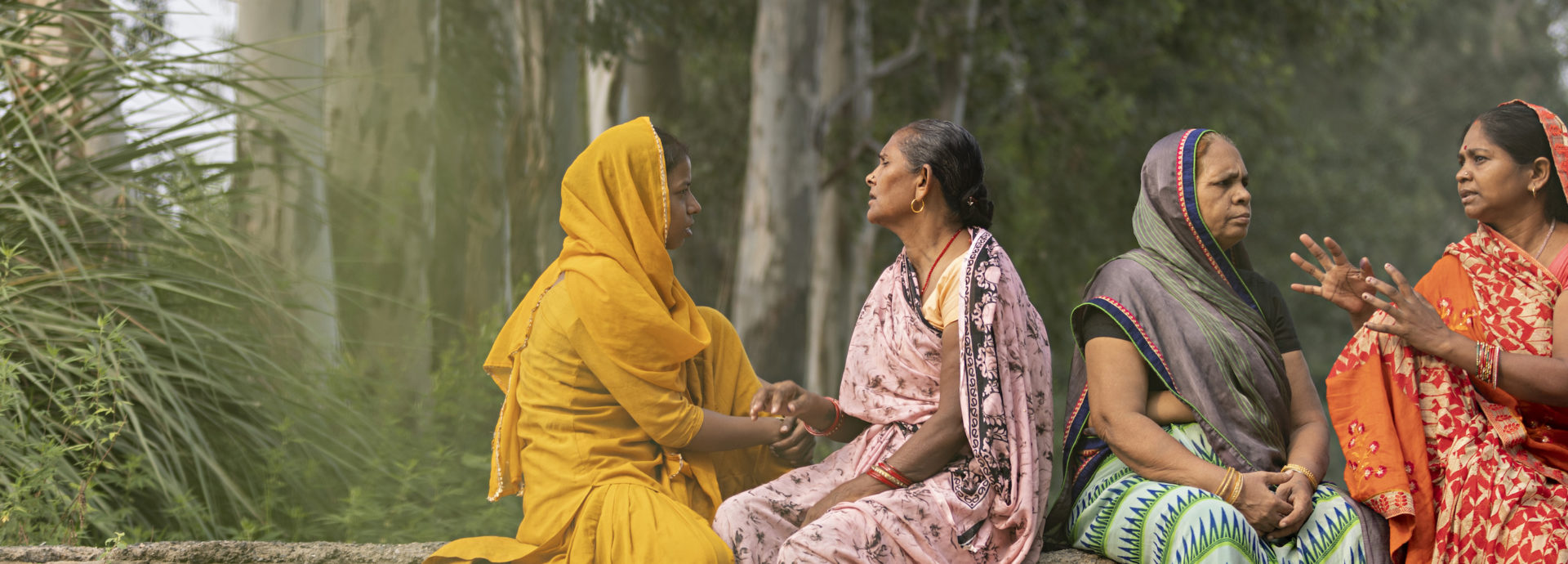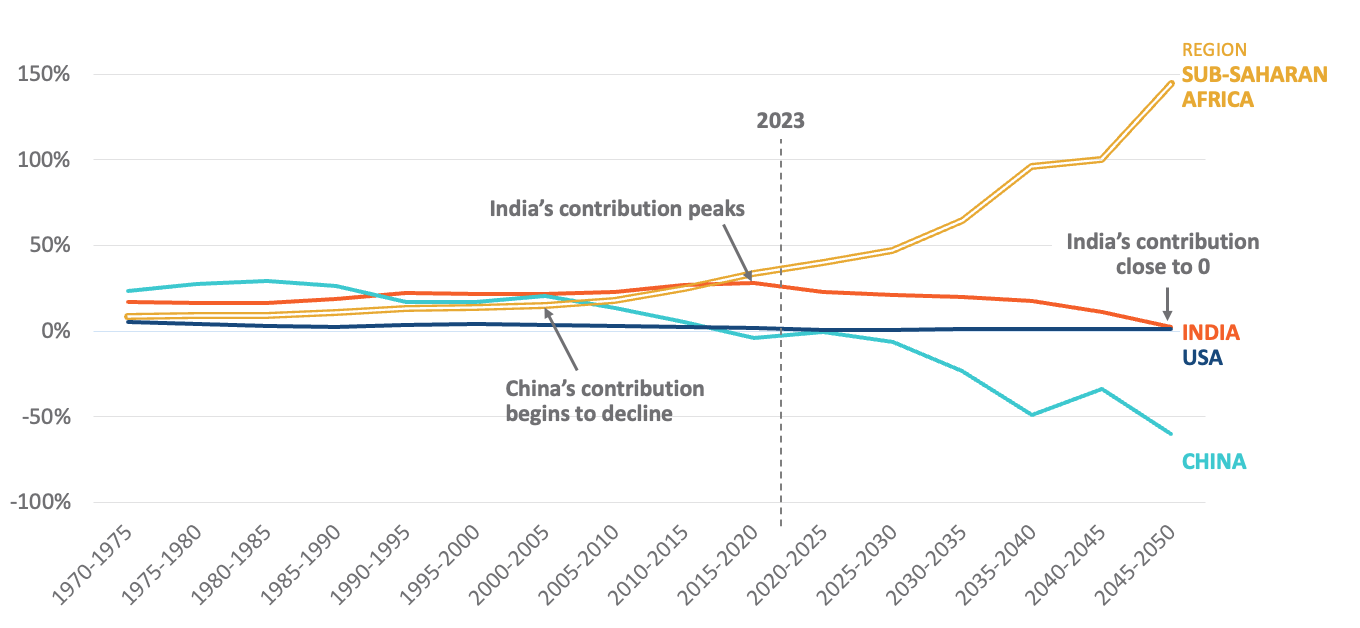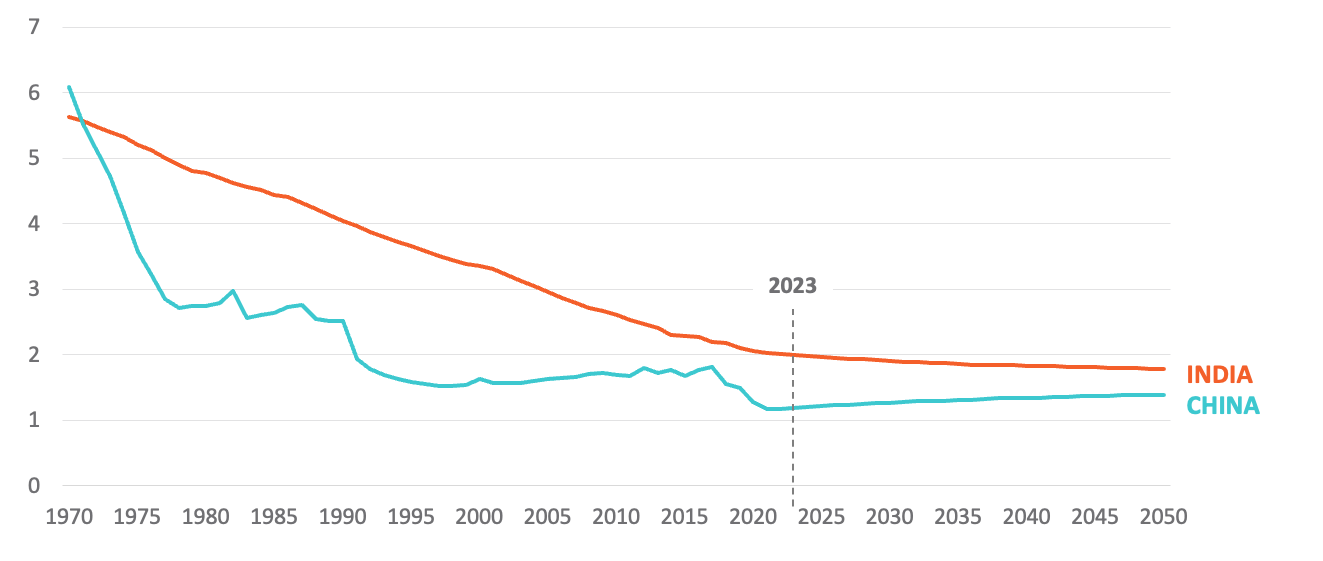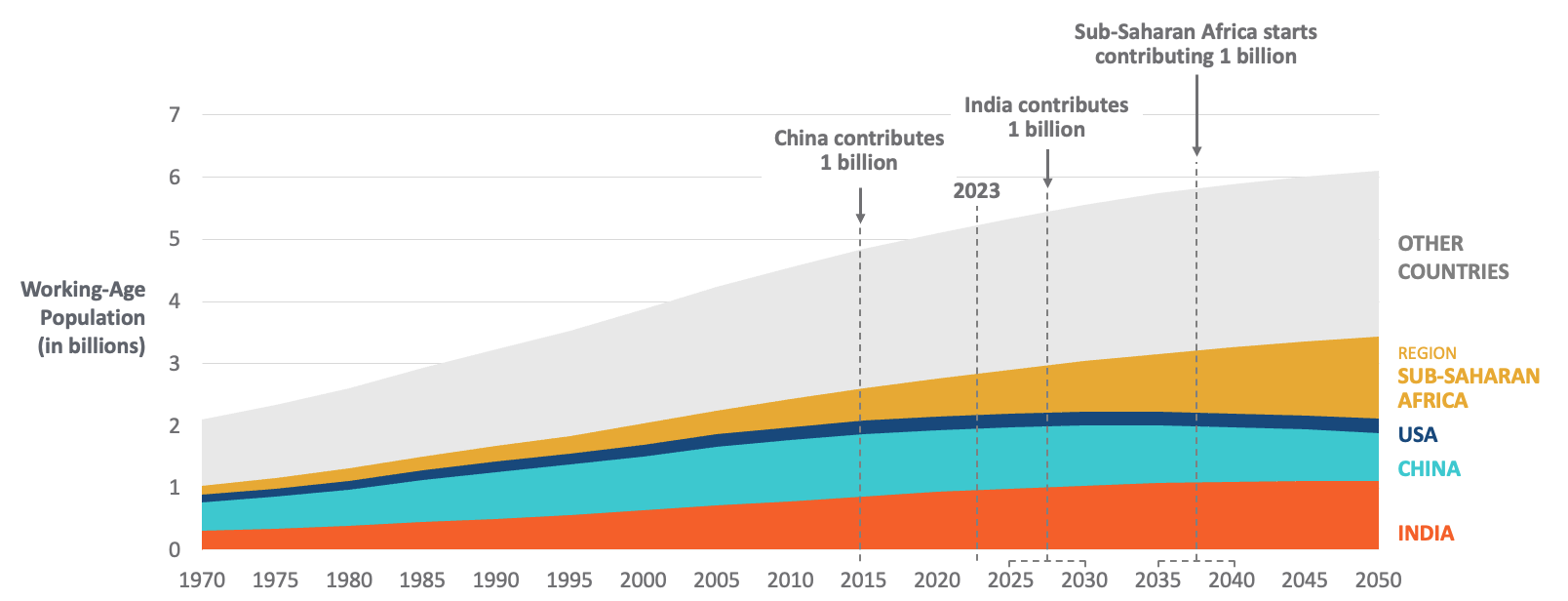For more information or to schedule a media interview, please contact media@prb.org or call 202-939-5463.

New PRB Analysis Offers Insights as India’s Population Surpasses China's, Notes Overlooked Rise of Sub-Saharan Africa
PRB provides analysis on why the demographic changes over the next 30 years matter for the global economy, the global labor force, and the United States.
Date
April 26, 2023
Contact
India today drives nearly a quarter of the growth in the global working-age population, and sub-Saharan Africa’s share is rising sharply.
Percent Contribution of Projected Growth in the Global Working-Age Population
Source: PRB analysis of the data from United Nations (UN), Department of Economic and Social Affairs (DESA), Population Division’s World Population Prospects: 2022 Revision.
India currently has a relatively young population, with 25% of people under age 15. Its working-age population, defined as those between ages 15 and 64, numbers 1 billion—and growing.
India contributes more people to the growth in the global working-age population than any other single country, with a share of 23%. The next largest contribution to the growth in this population comes from Nigeria, at 7%. Yet by midcentury—in less than 30 years—India’s contribution will have decreased to just 2%.
India’s fertility rate, like China’s, is decreasing, and its population is aging.
Total Fertility Rate (Lifetime Births per Woman) in China and India, 1970-2050
Source: UN DESA, Population Division, World Population Prospects: The 2022 Revision.
On average, women in India today have two children, just under the number needed to replace the country’s current population. While India’s states are tremendously diverse in their economic and social development, fertility in every state has declined steadily since 2005-2006.
By 2050, 14% of India’s population will be ages 65 and older, the United Nations’ definition of an aged society.1 The United States crossed this threshold in 2014, and China crossed it this year.
It took China 23 years for its share of people ages 65 and older to increase from 7% to 14% of the total population. India will take only a bit longer—26 years—to experience this same increase. By the mid-2050s, India will have more people ages 65 and older than under age 15. In fact, between today and 2050, India’s population ages 65 and older will grow by 144 million, the equivalent of the entire population of Russia.
India’s population will stop growing in the late 2060s.
As India’s contribution to the global working-age population begins to decline, sub-Saharan Africa’s contribution will increase.
Global Working-Age Population by Selected Countries and Region
Source: UN DESA, Population Division, World Population Prospects: The 2022 Revision.
By the late 2030s, sub-Saharan Africa’s working-age population will reach 1 billion, the size of the working-age population in India today.
By the late 2040s, three sub-Saharan African countries—the Democratic Republic of the Congo, Ethiopia, and Nigeria—will each contribute more people to the growth of the global working-age population than India.
By 2050, the 50 countries of sub-Saharan Africa together will account for 22% of the entire global working-age population. India’s share will be 18%, China’s 13%, and the United States’ 4%.
The relative share of the global working-age population living in sub-Saharan Africa will continue to grow through the 21st century. While population size helped confer geopolitical, economic, and cultural power to China and India, Africa’s growth may have been overlooked.
PRB hopes journalists will use this information to press policymakers and leaders to account for the changing composition of the global working-age population, including the growing demographic importance of the sub-Saharan African region, in their development of policies on climate change, the global labor force, and the global economy.
Definition of Terms
Labor force: All persons who are employed and who are actively looking for employment.2
[Total] fertility rate: The average number of children that would be born alive to a woman (or group of women) during her lifetime if she were to pass through her childbearing years conforming to the age-specific fertility rates of a given year. This rate is sometimes stated as the number of children women are having today.3
Working-age population: Commonly considered persons ages 15 and older who are actively engaged in the labor force, whether they are employed or looking for work. For data analysis purposes, PRB considered persons ages 15 to 64 to comprise the working-age population.4
Data Sources
The data in this analysis are taken from the United Nations, Department of Economic and Social Affairs, Population Division’s World Population Prospects: The 2022 Revision and PRB’s 2022 World Population Data Sheet (download the PDF for full data).
Want to share this information?
To use this content in your publication, please identify PRB as your source, link back to this page, and note figures are reproduced with permission from Population Reference Bureau.
Share our content and tag @PRBdata on Twitter and Facebook and @PRB on LinkedIn.
References
[1] World Bank Group, “World Bank Support to Aging Countries,” May 28, 2019.
[2] International Labour Organization (ILO), “Labor Force Statistics,” ILOSTAT.
[3] PRB, “Glossary of Demographic Terms.”
[4] ILO, “Labor Force Statistics.”



